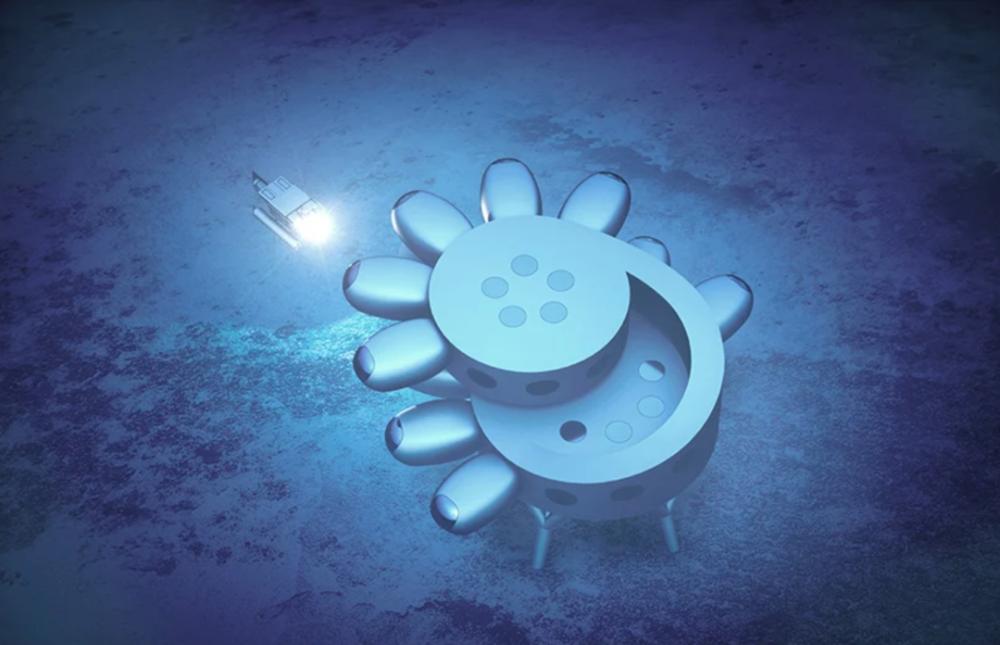
This article is authorized to be reproduced from Poison Technology
ID:dkj567
Author: Poison Technology
If you need to reprint, please contact the original author
When Musk and Space X
When busy sending people to heaven,
There was also a group of scientists busy sending people into the sea
。。。
Yes, no matter how severe the outbreak,
The busiest people are still scientists
。。。
No, just the other day,
The design of the world's largest underwater International Space Station is out!
Earlier this week, oceanographer, marine conservationist, filmmaker Fabien Cousteau and designer Yves Behar announced the construction of an underwater version of the International Space Station Proteus on the deepest seabed of the earth's surface.
Proteus Project Leaders: Yves Béhar and Fabien Cousteau
Fabien Cousteau believes that ocean exploration is 1,000 times more important than space exploration for human survival and human orbit into the future.
71% of the Earth's surface is oceans, but humans have only explored 5% of them so far, mapping less than 20% of these oceans.
Fabien Cousteau hopes to solve this problem with a project that will eventually build a worldwide network of underwater research habitats.
The oceanographer learned to scuba dive at the age of four and has been involved in the research expeditions of his grandfather, Jacques-Yves Cousteau.
In 1962, his grandfather helped develop the first underwater habitat called Conshelf, located about 33 feet below the sea surface off the coast of Marseille, France, for two people. This was followed by the construction of a larger, habitable seabed laboratory, Conshelf II, and a habitat capable of diving 330 feet.
Jacques-Yves Cousteau (center) and his crew sit in Conshelf II while his wife Simone observes marine life outside the window.
Over the next two decades, similar projects emerged around the world, and few have been preserved to this day.
With Conshelf II, underwater observers lived 36 feet under the Red Sea for a month and another 82 feet underwater for two weeks.
The only underwater space station in the world is the Aquarius space station at the bottom of the Atlantic Ocean, which covers only 400 square feet (about 37 square meters), but has gradually been abandoned.
Today, Fabien's planned underwater habitat and research station is one of the largest ever habitats and a legacy of his grandfather's business.
Fabien Cousteau said, "I'm just a lunatic with dreams."
Named after the original Greek sea god Proteus, the international space station project, whose structure is inspired by the appearance of polyps, was built from non-cutting materials to provide researchers with one of the world's most advanced underwater research sites and habitats.

Proteus is three times larger than other underwater laboratories and is 4,000 square feet (about 372 square meters), the size of a villa, and can accommodate 12 people. The entire space station is powered by wind, solar and ocean thermal energy, and is connected to the surface of the water through an umbilical cord lifeline, transmitting air and communications.
Modeled after the International Space Station (ISS), it is a safe and convenient "home" that allows divers to dive day and night without having to decompress for hours between dives.
Not long ago, spaceX crew dragon spacecraft successfully docked with the International Space Station (ISS)
Just like astronauts in space, they can stay underwater for days or even weeks at a time. Here, marine scientists, researchers, government agencies and private companies around the world can collaborate on a variety of scientific research regardless of borders.
Fabien wanted Proteus to adapt to the changing seabed. Its main body is a spiral double-layer circular structure design, fixed to the seabed by several pillars, and used as a common space such as a work area, kitchen, and dining room.
A series of pods extending from the main area can be used as bedrooms, laboratories, medical areas, life support systems, and storage areas. There is also a large hole under the Proteus so that divers can park and enter and exit with the submersible.
In addition, Proteus will be equipped with the world's first underwater greenhouse for growing food, so that scientists can obtain fresh food at a depth of 18 meters under the sea floor to achieve self-sufficiency, and there will also be a video studio for the purpose of spreading from the ocean at a resolution of 16K.
Most importantly, the Proteus underwater space station is modular in design, and there are many ways to upgrade and expand it, which is definitely a huge high-tech breakthrough~
Proteus is still in the early stages of fundraising, and if all goes well, it is expected to dive into operation 60 feet below the coast of the Dutch island of Curaçao in the near future.
Willemstad, Curaçao
I believe that the future will be with its landing,
It will certainly promote marine, medical, pharmaceutical, sustainable food production and climate change
Developments in many research areas.~
Maybe..
You'll also find mermaids
Wonderful video recommendations
Follow the "Design Fetish" video number
Every day creative videos give you a good look~